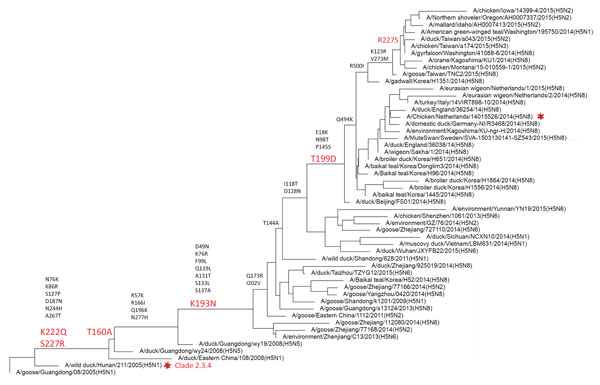Volume 23, Number 2—February 2017
Research
Highly Pathogenic Influenza A(H5Nx) Viruses with Altered H5 Receptor-Binding Specificity
Figure 5

Figure 5. Phylogenetic analysis of influenza A virus clade 2.3.4.4 H5 proteins. A 362-aa full-length hemagglutinin (HA) sequence for H5 clade 2.3.4.4 was obtained from GenBank and the GISAID database (http://platform.gisaid.org). An HA protein tree was constructed by using the PHYLIP neighbor-joining algorithm (https://ugene.net/wiki/display/UUOUM/PHYLIP+Neighbor-Joining) and the F84 distance matrix. This tree was used to construct a guide tree with 52 HA sequences representing all branches of the tree. These sequences were used to construct a summary tree of similar topology as the guide tree. Items above the branches indicate key residues that differ between different branches. Items in red above the branches indicate mutations introduced in this study. The HA protein tree is rooted by an early clade 2.3.4 isolate (A/goose/Guangdong/08). H5N12.3.4 and H5N8 HA proteins used in this study are indicated by red stars. H5N12.3.4, novel H5N1 virus clade 2.3.4.
1These authors contributed equally to this article.